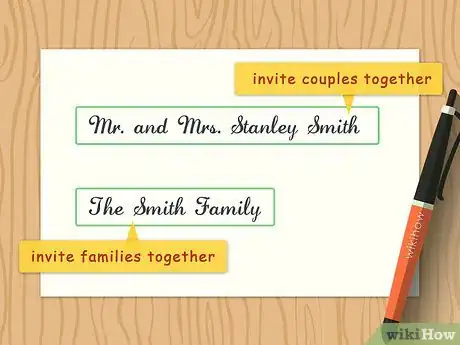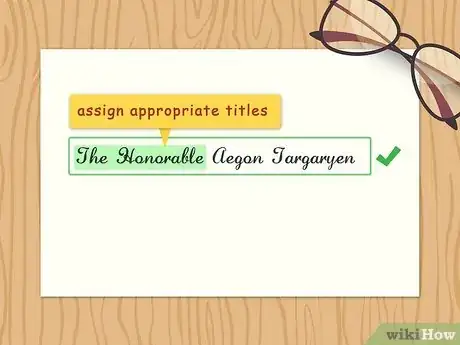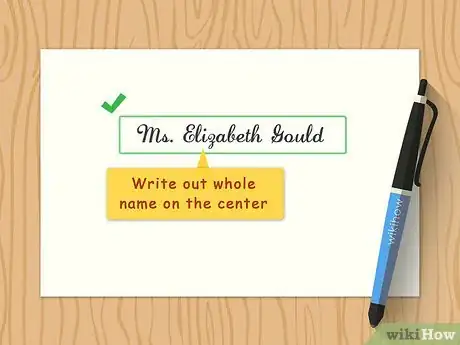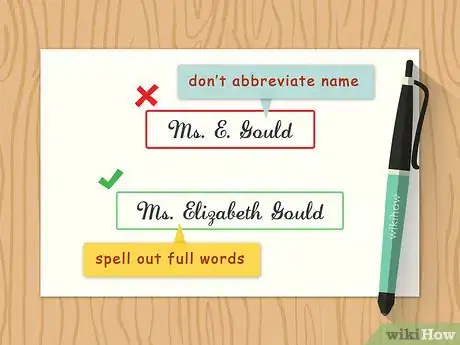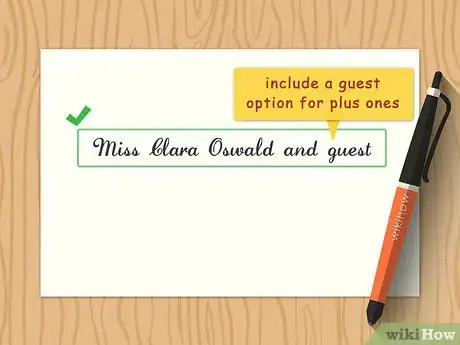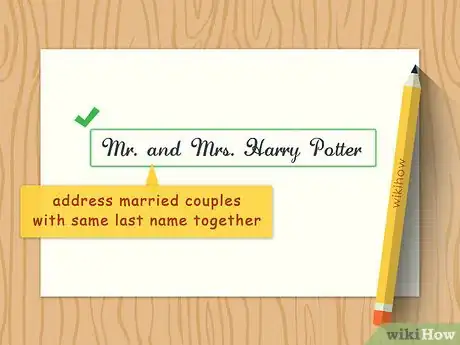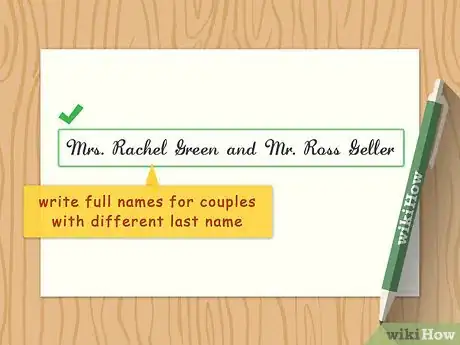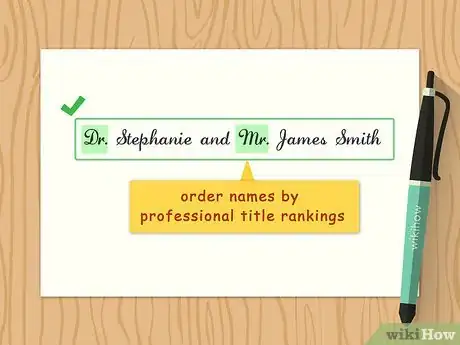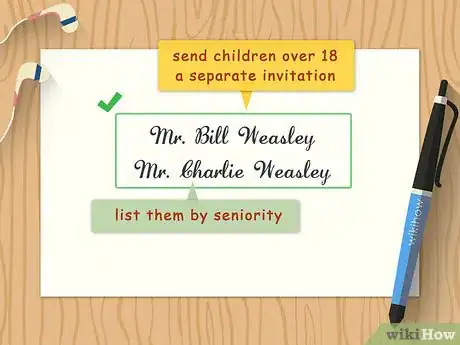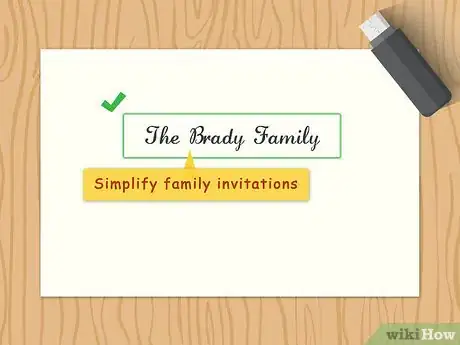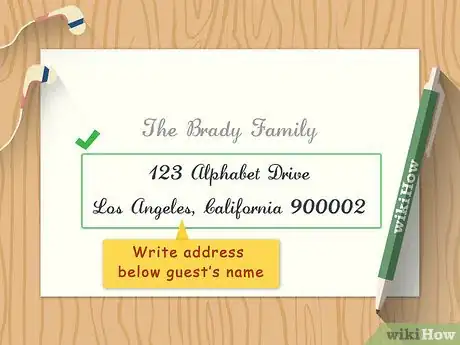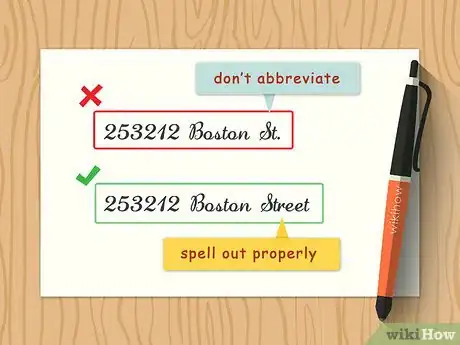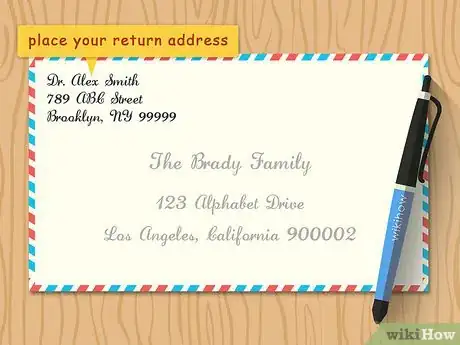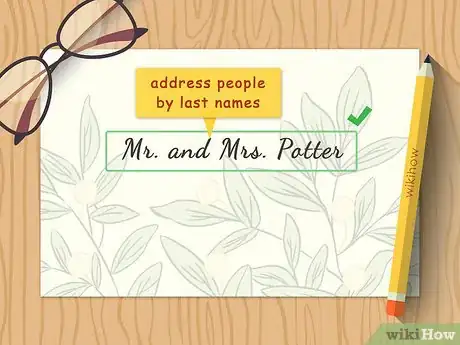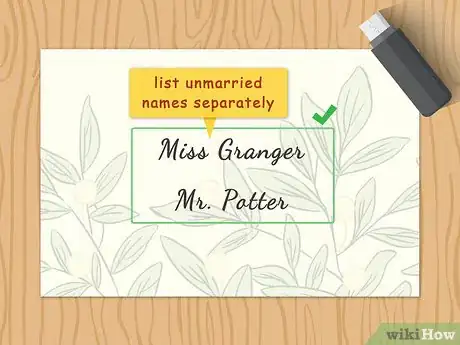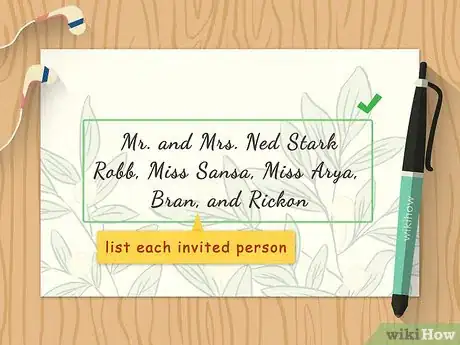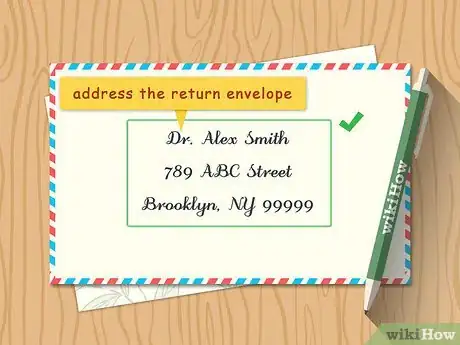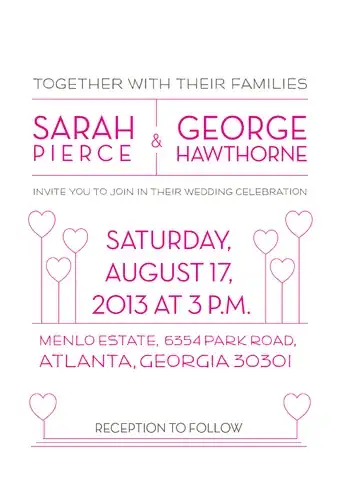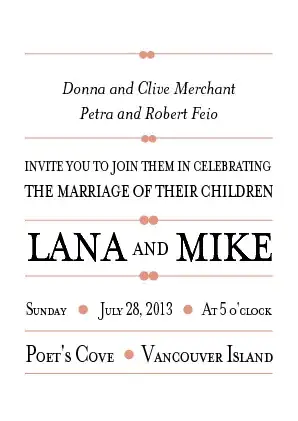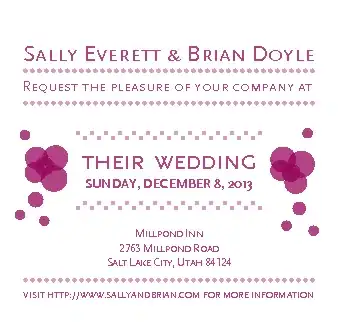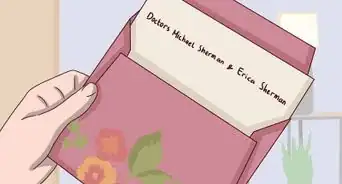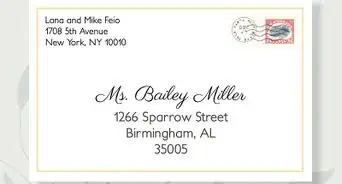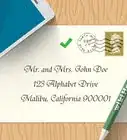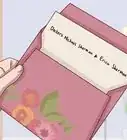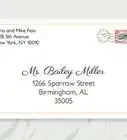This article was co-authored by Minoti Mehta. Minoti Mehta is the Founder of Vermilion Weddings & Events, an event and wedding planning business based in San Francisco, California. Minoti grew up in the event and wedding planning space and has over five years of event planning experience. She has been invited to participate as a Delegate at five exclusive Event Planner Conferences including Destination Wedding Planners Congress and Planners Xtraordinaire and has become known as one of the Top Wedding and Event Planners in the San Francisco Bay Area. Minoti's work has been featured on NDTV India, Love Stories TV, Maharani Weddings, and WedWise India. Vermilion Weddings & Events was also awarded WeddingWire's Couple's Choice Award in 2018. Minoti has a BS in Hospitality Management and Accounting from the University of San Francisco.
There are 8 references cited in this article, which can be found at the bottom of the page.
This article has been viewed 388,645 times.
Your big day is approaching. You’ve got to find a way to get these invitations in the hands of guests all over the place, but you can’t figure out how to address them. While the etiquette seems complicated at first, there are simple rules you can follow to get this job done in time to plan the rest of your wedding. By writing out the full names of your guests on the outer envelopes and addressing them more informally on the inner envelope, you’ll come up with beautiful invitations your guests will adore.
Steps
Organizing a Guest List
-
1Write out the names and addresses of all your guests. Before you put pen to expensive but pretty paper, do a headcount.[1] Take the time to check over this information so you don’t make any spelling errors that might bother you when you’ve got plenty of other planning to worry about.[2]
- As you go along, you’ll be able to figure out who gets invited together and who gets invited separately.
-
2Invite families and couples together. Any couple, married and unmarried, can be placed on the same envelope, as long as you wish to invite both of them. If you try to get out of inviting your friend’s new partner you’re iffy about, you might have an awkward moment on your hands. Children under 18 can also be addressed on the same invitation as their parents.
- For children over 18, it’s usually best to send a separate invitation. If they live with their parents, you can get away with including them all on the same invitation.
- Similarly, siblings or other people living together but not in a relationship can be invited together. However, you might find separate invitations to be a more thoughtful gesture. This is up to you.
Advertisement -
3Invite single guests separately. Individual invitations are for your guests that aren’t covered on any other invitations. These are for people neither in a relationship nor living together with another guest. You may also choose to invite one person in a couple or household, but be prepared for any drama that might arise from those who feel left out. Single invitees can also be given a guest option to make up for this.
- The guest option is used to invite someone you don’t know well, such as the new partner your friend is seeing.
-
4Assign appropriate titles to your guests. Noting a guest's professional titles, such as for doctors, military officials, and judges, is a respectful, classy touch. When these aren’t relevant, you’ll need to address people by Mr. and Mrs. Mr. is used for any males age 18 or older. Mrs. is used for married women or divorced and widowed women. Miss is used for single women and girls under 18. It’s a little complicated, so taking care of this before you start writing can be a great relief.
- Ms. is a catch-all address. It works well for unmarried women over 30 and anytime you’re unsure about what title to use.
- For medical doctors, you must spell out the word doctor. Other doctors get the abbreviation “Dr.,” which replaces Mr. and other prefixes.
- Refer to judges like “The Honorable Renley Baratheon” and military personnel like “Lieutenant Loras Tyrell, US Army.”
Naming Guests on the Outer Envelope
-
1Write out whole names on the center of the envelope. That’s right, the recipient name features prominently on the envelope’s front. Let the guest feel special. You’re choosing them to attend an important even in your life, after all. Leave space below for coupled guests with different last names as well as the sending address.[3]
-
2Spell out full words as often as possible. Guest names are a given, since the only abbreviations you’ll use are ones such as Mr., Mrs., Jr., and Dr. Other words such as “and” are also typically spelled out for the sake of formality. It’ll also give you a wicked hand cramp. As long as you’re consistent, you can get away with shortening and to “&.” No one’s going to call you out on it.
-
3Include a guest option for plus ones. An ordinary address to your dear but unmarried friend is “Miss Clara Oswald.” If you intend on only inviting her, you can leave it at that. Most people bring guests, and you need to show that this is welcome. Write, “Miss Clara Oswald and guest.” The word “guest” is always lowercase. At least you won’t be surprised when Miss Oswald turns up at your wedding with a plus one.[4]
- The word “guest” is only used when you don’t know the guest’s name. If you do know the name, write the name out under the first one. For example, write “Miss Clara Oswald” then “Dr. John Who” under it.
- You could choose to leave the “and guest” for the inner envelope. Leaving it out can make the outer envelope feel more personal.
-
4Address married couples with the same last name together. These are the easiest ones to figure out, as long as no one has a special title like Dr. Those married friends and parents you know are represented as a union like their wedding oath proclaims. The proper address is “Mr. and Mrs. Harry Potter” or “Mr. Harry and Mrs. Ginny Potter.” You’ll probably be wishing you knew more married couples.[5]
- The person whose last name is used on the invitation goes first unless their partner has a professional title, such as Dr. or a military ranking.
- The same rules apply to married same-sex couples that share a last name. If they don't share a last name, write the full names on separate lines.
-
5Write out the full names for couples that don’t share a last name. Some people don’t assume their partner’s last name. Invalidating that choice or their marriage would be an unpleasant start to your wedding, so take the time to write out both names. The person you are closest to goes first. For example, you’re best friends with Rachel, so you write “Mrs. Rachel Green and Mr. Ross Geller.”[6]
- When you are equally close to each person, list the names in alphabetical order.
-
6Separate unmarried couples onto different lines. It doesn’t matter if they live together or not. Standard etiquette is to keep the names separate to differentiate them. These stiff old standards have relaxed over time, so you may be able to join the names with the word “and” like you would for married couples. To play it safe, separate the names, order them alphabetically by last name, and write the names out in full.[7]
- For example, write “Mr. Joffrey Baratheon.” Under it, write “Miss Sansa Stark.”
-
7Order names by professional title rankings. Ranking tops gender, so if your best lady friend is an army colonel, judge, or rocket scientist, you better give her respect. Standard notation for rankings is “Dr. John and Mrs. Who.” If Mrs. Who is the doctor, flip the names. If they’re both doctors, you can write “Drs. John and Clara Who.” The abbreviation for Dr. only needs to be written out in full for medical doctors.
- Remember to follow the other rules, such as denoting couples with different last names. Change it to “Dr. John Who and Dr. Clara Oswald.”
-
8Send children over 18 a separate invitation. At age 18, children are considered legal adults, at least in the US. It gets tricky when the friend you want to invite is living with their parents. You are free to include them on their parents’ invitation, if you are sending one. You might as well send a separate invitation to avoid the confusion.[8]
- When there are multiple children over 18 living together, list them by seniority. For example, write “Mr. Bill Weasley.” Under it, write “Mr. Charlie Weasley.”
- Good news! You don’t need to list children under 18 on the outer envelope. You may do it by writing “Sansa and Arya” under “Mr. and Mrs. Ned Stark,” but ask yourself if it’s worth the effort.
-
9Simplify family invitations to a last name. Writing out the full family name is perfectly acceptable and thoughtful. Normally, you’d address the invitation to the parents. Fortunately, there’s a modern way to be inclusive while saving yourself time. Write out the invitation as “The Brady Family.” This implies the invitation is for the entire family, keeping your work short and sweet.
Filling out Address Information
-
1Write addresses below the outer envelope's guest names. The address goes right under the guest name, so hopefully you've left enough space. The outer envelope is what the mail carrier sees, so the address as to be there. Write clearly and legibly so that the postal service gets the invitations to your guests on time.
- Take the time to refer to your guest list for accurate shipping information. You'll have some explaining to do if grandma's invitation gets lost in the mail.
-
2Avoid using abbreviations. Unfortunately, you can’t save yourself some time here. You have to painstakingly write out the words you’re used to abbreviating. Avenue, for example, should not be AVE on your envelope. State and country abbreviations also look tacky, so go ahead and learn how to spell Mississippi before trying to invite your long-lost uncle.[9]
- In cases of couples not living together, the address used should belong to the person you know best.
-
3Place your return address in the upper left corner. Your hand is cramped, but persevere for the good of your wedding day. Lost envelopes won’t make their way back to you without a return address. The upper left corner is the standard spot for your full and unabbreviated address. To avoid cramping the front side, you may write it on the back flap. The stamp can go back there too to give your handwriting space to shine.[10]
- Printed address labels, while not as appealing as handwriting, are an option. It’ll give you more time to spend on the important decisions, such as what kind of frosting to use on your cake (like chocolate or more chocolate).
- If an invitation is returned to you unopened, it most likely means you have the wrong address.
Addressing the Invitation and Response Cards
-
1Mention close friends by first name only. Referencing first names is a sign of intimacy and should only be done with people you know well. It’s tempting to do it with everyone, since it saves you a lot of writing, but that would be uncomfortable for your boss, teacher, or uncle you never met. Reserve it for good friends and other people you’re on a first name basis with.[11]
- For example, write out “Harry and Ginny.”
- Families can be listed easily like this. You can write, “Ned, Catelyn, Robb, Miss Sansa, Miss Arya, Bran, and Rickon.”
- Initials are never a valid substitution for a name, but suffixes like Jr. and Sr. are always appropriate.
-
2Address most people by their last names. The bad news is that you’ll have to do more writing, unless you hired someone to do it for you. The good news is that you get to be slightly less formal. Instead of writing first and last names, the inner envelope only contains the last name behind the salutation. Don’t forget special honors such as Dr.
- For example, write “Mr. Potter and guest” or “Mr. and Mrs. Potter,” depending on the relationship.
-
3List unmarried names separately. Everyone who isn’t married gets the honor of having their own line. Hey, it doesn’t have to be a bad thing. Doing this gives both names equal weight. Order the names again by familiarity, or, for equal familiarity, by alphabetical order.[12]
- For example, write out “Miss Granger.” Under it, write “Mr. Potter.”
-
4List each person invited to the wedding. This is an important step when you intend on inviting whole households. The inner envelope is the point where you have to list every name, including children under 18. If your family received an invitation that listed your parents but left you out, you’d be confused. You weren’t verbally invited, and it would be awkward if you showed up unwelcome.[13]
- Note the adult names first, such as “Mr. and Mrs. Ned Stark.” Under that, list the children by seniority. For instance, write “Robb, Miss Sansa, Miss Arya, Bran, and Rickon."
- Girls under 18 are denoted as “Miss.” Boys under 18 don’t get a title. How unfair!
-
5Address the return envelopes. These are the envelopes your guests need to return their responses. Giving people zero excuse for not RSVPing will at least save some of your hair when you start pulling it out over planning this big event. Write your name, house number, street, town, state, and zip code in the center of the envelope.
- To save a whole lot of time, get pre-printed envelopes. You’ve written enough names and addresses for one day.[14]
Sample Wedding Invitations
Sample RSVP Cards
Community Q&A
-
QuestionHow would I address Mr. and Mrs. or guest?
 Community AnswerYou could write "Mr. and Mrs..." then explain inside the card that they are welcome to bring a guest.
Community AnswerYou could write "Mr. and Mrs..." then explain inside the card that they are welcome to bring a guest. -
QuestionIs it proper to use only the last name of a married couple when addressing an envelope?
 Community AnswerThat would seem a little too impersonal to many guests. For the inner envelope, it's acceptable as long as you include the appropriate epithets (such as Mr. and Mrs.). On the outer envelope, it's better to specifically name the guests by their full name and title.
Community AnswerThat would seem a little too impersonal to many guests. For the inner envelope, it's acceptable as long as you include the appropriate epithets (such as Mr. and Mrs.). On the outer envelope, it's better to specifically name the guests by their full name and title. -
QuestionHow do you address an invitation that the groom just wants to hand out to a few people at work?
 Community AnswerThe same way you address all invitations.
Community AnswerThe same way you address all invitations.
References
- ↑ Minoti Mehta. Event & Wedding Planner. Expert Interview. 6 March 2020.
- ↑ Stefanie Chu-Leong. Owner & Senior Event Planner, Stellify Events. Expert Interview. 24 January 2020.
- ↑ https://www.annsbridalbargains.com/content/wedding-envelope-addressing/
- ↑ http://www.southernliving.com/weddings/how-to-address-wedding-invitations#friend-with-known-guest-addressing-wedding-invitations
- ↑ https://www.theknot.com/content/addressing-wedding-invitations
- ↑ https://www.weddingpaperdivas.com/how-to-address-wedding-invitations.htm
- ↑ https://www.invitationsbydawn.com/content/inner-and-outer-envelopes/
- ↑ http://www.southernliving.com/weddings/how-to-address-wedding-invitations#friend-with-known-guest-addressing-wedding-invitations
- ↑ https://emilypost.com/advice/addressing-and-sending-wedding-invitations
- ↑ https://www.invitationsbydawn.com/content/inner-and-outer-envelopes/
- ↑ https://www.theknot.com/content/addressing-wedding-invitations
- ↑ https://www.theknot.com/content/addressing-wedding-invitations
- ↑ https://www.weddingpaperdivas.com/how-to-address-wedding-invitations.htm
- ↑ Minoti Mehta. Event & Wedding Planner. Expert Interview. 6 March 2020.
About This Article
To address wedding invitations, place families and couples on the same envelope and invite single guests separately. When you're writing out your guests' names, use the proper title, like "Mr." or "Mrs.," followed by their first and last name. If you're addressing a married couple, only write their last name once. For example, you could write "Mr. John and Mrs. Jane Smith." For a family, you can simply write something like "The Brady Family" on the envelope. To learn how to fill out your guests' addresses, scroll down!



